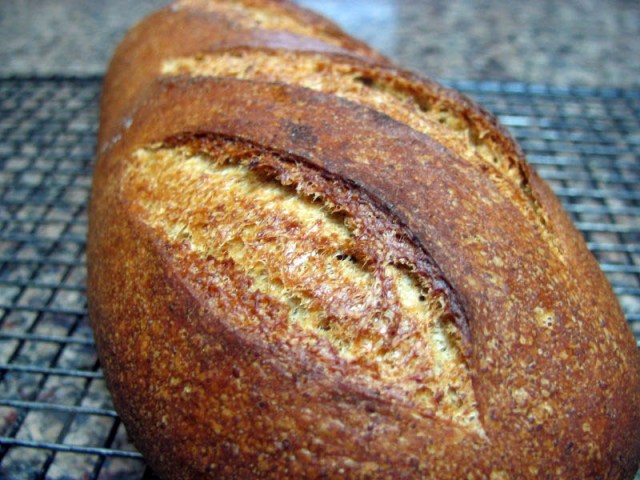Post #100 at Bewitching Kitchen! Pop the Champagne and toast to food!
It’s hard to believe that only NINE breads remain in the BBA Challenge… If you haven’t been following it, Nicole launched the event months ago with the idea of baking her way through the Bread Baker’s Apprentice, by Peter Reinhart, and invited other crazy bakers to join in. We bake’em and blog’em, but if you want the recipes, then you’ll have to get the book.
I wasn’t too wild about making a pumpernickel bread, but I prepared my rye starter and mixed the dough. I couldn’t find pumpernickel flour, which is a particularly coarse grind of rye, so I had to use regular rye flour in its place. Sorry, Mr. Reinhart! 😉
I am glad to report that this bread was a winner, even without the correct flour!

I halved the recipe, mainly because I didn’t expect us to love it, but, in retrospect, that was a mistake: two of these loaves would be more than welcome in our home!

I had no problems whatsoever with this recipe. I skipped pictures of the dough rising, because it didn’t seem to rise much, but this photo shows the slashed loaf, just before the oven.

The bread did have some oven bounce, which always makes the baker happy! The crumb was tight and lighter than that of the bread in the book . I used instant coffee in the dough, maybe cocoa powder would make it darker. It was tender, moist, and had perfect balance of sweetness and sourness. A piece of sharp, aged Cheddar cheese was declared the winning match for this bread …
Note to self: next time, make the full recipe! 😉


















